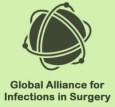Acute appendicitis is the most common cause of intra-abdominal infections worldwide. Acute appendicitis encompasses a wide spectrum of clinical presentations, from the uncomplicated form to the one with diffuse peritonitis.
Since McBurney advocated early surgical intervention, appendectomy has been the gold standard for the treatment of appendicitis. This view was based on the assumption that, in the absence of a surgical intervention, acute appendicitis always lead to perforation. This has been recently challenged by the hypothesis that perforated and non-perforated appendicitis may be distinct entities rather than sequential events, just like in acute diverticulitis. Therefore in recent years there has been increased interest in antibiotic therapy as primary treatment, and several studies have indicated that perforated appendicitis can be treated with antibiotics
Unfortunately, the clinical presentation of appendicitis is often inconsistent. While the clinical diagnosis may be clear in patients presenting with classic signs and symptoms, atypical presentations may result in delay in treatment. Besides many patients with pain in the right lower quadrant do not have acute appendicitis. Imaging is an important part in the diagnosis of acute appendicitis as well. CT-scan is classically considered the best radiological modality for acute appendicitis. It can distinguish complicated from uncomplicated appendicitis. However, the radiation exposure, the possible delay in performing CT-scan and the difficult access to CT-scan in some areas of the world are concerns associated with its widespread application. Despite of the role of imaging tools in diagnosing acute appendicitis, clinical assessment remains the key in the decision-making process.
In the last years, the conservative treatment with antibiotics alone has been proposed for treating uncomplicated appendicitis. The term of acute uncomplicated appendicitis is vague. It was defined as the presence of peritonitis, perforation and abscess. However, this diagnosis is often difficult, and the most suitable tool for differentiating complicated from uncomplicated appendicitis is CT-scan.
In 2015 the APPAC trial enrolling 350 patients with uncomplicated appendicitis confirmed by a CT-scan (257 antibiotic therapy, 273 appendectomy) was published. Patients aged 18 to 60 years admitted to the emergency department with a clinical suspicion of uncomplicated acute appendicitis confirmed by a CT scan were enrolled in the study. Patients with complicated appendicitis, which was defined as the presence of an appendicolith, perforation, abscess, or suspicion of a tumor on the CT scan, were excluded. Of 257 patients in the antibiotic group, 15 (5.8%; 95% CI, 3.3%-9.4%) underwent appendectomy during the initial hospitalization. Of these 15 patients, 7 (2.7%; 95% CI, 1.1%-5.5%) had complicated acute appendicitis at surgery and 8 (3.1%; 95% CI, 1.4%-6.0%) had uncomplicated appendicitis. Of the 7 patients with complicated acute appendicitis, there were 5 with perforated appendicitis. Of these 5 patients, 1 had an appendicolith not visible on a CT scan, 2 presented with severe gangrene of the inflamed appendix, and 1 underwent right hemicolectomy based on an intraoperative suspicion for a tumor with lymphadenopathy. However, histopathology of the resected specimen revealed only perforated appendicitis. The 1-year recurrence rate and appendectomy in the antibiotic group was reported as 27%. Ertapenem was the antibiotic of choice in this study. It was preferred due to its efficacy as a single agent for abdominal infections.
To determine the late recurrence rate of appendicitis after antibiotic therapy for the treatment of uncomplicated acute appendicitis five-year observational follow-up of patients in APPAC study was recently published. The cumulative incidence of appendicitis recurrence was 34.0% (95% CI, 28.2%-40.1%; 87/256) at 2 years, 35.2% (95% CI, 29.3%-41.4%; 90/256) at 3 years, 37.1% (95% CI, 31.2%-43.3%; 95/256) at 4 years, and 39.1% (95% CI, 33.1%-45.3%; 100/256) at 5 years. At 5 years, the overall complication rate (surgical site infections, incisional hernias, abdominal pain, and obstructive symptoms) was 24.4% (95% CI, 19.2%-30.3%) (n = 60/246) in the appendectomy group and 6.5% (95% CI, 3.8%-10.4%) (n = 16/246) in antibiotic group (P < .001), which calculates to 17.9 percentage points (95% CI, 11.7-24.1) higher after surgery. There was no difference between groups for length of hospital stay.
Although antibiotic therapy alone can be successful in selected patients with uncomplicated appendicitis, some concerns remain. Arguments against the non-operative approach include the difficult diagnosis of uncomplicated appendicitis needing CT-scan, the possible need and subsequent delay in surgery, the high risk for recurrence of acute appendicitis up to 38% within 1 year, and missing of other diagnosis when CT-scan is not performed.
Antibiotics seem to be a safe and effective treatment in certain subsets of patients with uncomplicated acute appendicitis, possibly reducing the number of unnecessary surgeries and hence their associated morbidity. However, the present data are not sufficient to definitively recommend conservative management. Randomized controlled trials and systematic reviews have shown conflicting results with regard to the safety and efficacy of non-surgical treatment by antibiotics.
For these reasons, I believe that appendectomy remains the gold-standard treatment for the patients with a very high suspicion of acute uncomplicated appendicitis, reserving conservative treatments in selected patients, such as those with equivocal clinical picture or equivocal imaging.
Massimo Sartelli
References
Salminen P, Paajanen H, Rautio T, et al. Antibiotic therapy vs appendectomy for treatment of ncomplicated acute appendicitis: the APPAC randomized clinical trial. JAMA. 2015;313:2340–8.
Salminen P, Tuominen R, Paajanen H, Rautio T, Nordström P, Aarnio M, Rantanen T, Hurme S, Mecklin JP, Sand J, Virtanen J, Jartti A, Grönroos JM. Five-Year Follow-up of Antibiotic Therapy for Uncomplicated Acute Appendicitis in the APPAC Randomized Clinical Trial. JAMA. 2018 Sep 25;320(12):1259-1265.


Fully agree with Prof Sartelli. As the old aphorism goes ‘Appendicitis is a clinical diagnosis’! But with modern imaging modalities, conditions mimicking appendicitis are being picked up, hence unnecessary appendectomies are being avoided! Also, problem lies when the USG report in inconclusive and one is forced to do a CECT abdomen.
LikeLike